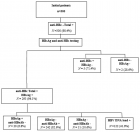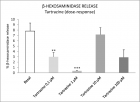Abstract
Research Article
Optimization of the fermentation process, characterization and antioxidant activity of exopolysaccharides produced from Azotobacter As101
Paiziliya Paerhati, Ning Hui Xia, Niu Li Tao, Gao Yan Hua, Lu Chun Fang and Abulimiti Yili*
Published: 20 December, 2022 | Volume 6 - Issue 1 | Pages: 082-088
Azotobacter was selectively isolated and purified from the soil samples of Xinjiang Salt Lake Scenic spot, the fermentation technology of exopolysaccharides (EPS) by Azotobacter was optimized, and the antioxidant activity of exopolysaccharides (EPS) was studied. The bacteria were isolated and purified from the soil samples by the scribing method and the 16SrRNA gene was used for molecular identification. The carbon source, fermentation time, inoculation amount and pH of target bacteria in the exopolysaccharides (EPS) fermentation process were optimized through single-factor experiments and their antioxidant activity was measured. Eight types of Azotobacter were isolated and purified from the soil samples of Salt Lake scenic spot. Among them, As101, which showed 99.58% homology with Azotobacter salinestris, was selected as the target strain. Through single-factor experiments which used exopolysaccharides (EPS) yield and exopolysaccharides content as indexes, the optimal conditions for the As101 fermentation process were determined as follows: fermentation temperature 35, fermentation time 96h, pH 7 and mannitol as carbon source. Exopolysaccharides content from Azotobacter salinestris was 61.35% and the yield was 6.34 g/L. The results of the exopolysaccharides (EPS) antioxidant activity experiment under optimal conditions showed that As101 EPS had excellent scavenging ability against DPPH free radical, ABTS free radical and hydroxyl free radical, with IC50 values of 6.11 mg/ml, 2.42 mg/ml and 9.57 mg/ml, respectively. As101 with high yield and high exopolysaccharides content was isolated from saline soil in a special environment of Xinjiang, and the EPS obtained showed excellent antioxidant activity. The Azotobacter found in this study would provide the material basis for further opening up the adsorption of exopolysaccharides on heavy metals and the improvement of saline-alkali soil and contribute to further understanding of the structure and other activities of exopolysaccharides derived from Azotobacter.
Read Full Article HTML DOI: 10.29328/journal.aac.1001036 Cite this Article Read Full Article PDF
References
- Aleem A, Isar J, Malik A. Impact of long-term application of industrial wastewater on the emergence of resistance traits in Azotobacter chroococcum isolated from rhizospheric soil. Bioresour Technol. 2003 Jan;86(1):7-13. doi: 10.1016/s0960-8524(02)00134-7. PMID: 12421001.
- Ding L. Isolation, purification and antioxidant activity of exopolysaccharides from a bacterial strain. Northwestern University. 2021.
- Binbin L, Qing S, Bo M .Application of exopolysaccharide directionally synthesized by Xanthomonas campestris as the green selective depressant for the clean flotation of talc: Statistical optimization and mechanism analysis. Journal of Cleaner Production. 2023; 383: 135381.
- Dina H. Antioxidant and antimicrobial activities of exopolysaccharides produced by a novel Aspergillus sp. DHE6 under optimized submerged fermentation conditions. Biocatalysis and Agricultural Biotechnology. 2021; 36: 102150.
- Delattre C, Pierre G, Laroche C, Michaud P. Production, extraction and characterization of microalgal and cyanobacterial exopolysaccharides. Biotechnol Adv. 2016 Nov 15;34(7):1159-1179. doi: 10.1016/j.biotechadv.2016.08.001. Epub 2016 Aug 12. PMID: 27530696.
- Gauri SS, Mandal SM, Mondal KC, Dey S, Pati BR. Enhanced production and partial characterization of an extracellular polysaccharide from newly isolated Azotobacter sp. SSB81. Bioresour Technol. 2009 Sep;100(18):4240-3. doi: 10.1016/j.biortech.2009.03.064. Epub 2009 Apr 28. PMID: 19403304.
- Rana S, Upadhyay LSB. Microbial exopolysaccharides: Synthesis pathways, types and their commercial applications. Int J Biol Macromol. 2020 Aug 15;157:577-583. doi: 10.1016/j.ijbiomac.2020.04.084. Epub 2020 Apr 15. PMID: 32304790.
- Morten KDD, Maaike B, Emil JZ.Genetic potential for exopolysaccharide synthesis in activated sludge bacteria uncovered by genome-resolved metagenomics. Water Research. 2022; 119485.
- Rodríguez C, Medici M, Rodríguez AV, Mozzi F, Font de Valdez G. Prevention of chronic gastritis by fermented milks made with exopolysaccharide-producing Streptococcus thermophilus strains. J Dairy Sci. 2009 Jun;92(6):2423-34. doi: 10.3168/jds.2008-1724. PMID: 19447974.
- Cheng HB, Han Y, Ren S. Isolation, Purification and Anti S180 Sarcoma of Extracellular Polysaccharides of Rhizobium sp. N613. Chinese Journal of Pharmacy, 2008; 43(4): 5.
- Zhang JG. Study on the Synthesis of Polyhydroxyalkanoic Acid and Polysaccharides by Rhizobium SP 1201. Sichuan Agricultural University. 2005.
- Ia YX, Geng XQ, Huang ZM. Fermentation optimization and anti-tumor activity of polysaccharides from Rhizobium sp.NG10. Food and Fermentation Industries. 2019; 45:5.
- Patil SV, Salunkhe RB, Patil CD, Patil DM, Salunke BK. Bioflocculant exopolysaccharide production by Azotobacter indicus using flower extract of Madhuca latifolia L. Appl Biochem Biotechnol. 2010 Oct;162(4):1095-108. doi: 10.1007/s12010-009-8820-8. Epub 2009 Nov 18. PMID: 19921493.
- Sofía DC, María CO, Aparna B. Biological properties of exopolysaccharides produced by Bacillus spp. Microbiological Research. 2023; 268: 127276.
- Zhuang Z, Yang G, Zhuang L. Exopolysaccharides matrix affects the process of extracellular electron transfer in electroactive biofilm. Sci Total Environ. 2022 Feb 1;806(Pt 3):150713. doi: 10.1016/j.scitotenv.2021.150713. Epub 2021 Oct 2. PMID: 34606863.
- Sun L, Cheng L, Ma Y, Lei P, Wang R, Gu Y, Li S, Zhang F, Xu H. Exopolysaccharides from Pantoea alhagi NX-11 specifically improve its root colonization and rice salt resistance. Int J Biol Macromol. 2022 Jun 1;209(Pt A):396-404. doi: 10.1016/j.ijbiomac.2022.04.015. Epub 2022 Apr 9. PMID: 35413311.
- Xiu AH. Preparation structure analysis and biological functions study for an extracellular polysaccharide produced by Agrobacterium sp. ZX09. Nanjing University of Technology. 2011.
- Yituxun A, Paerhati R, Gao YH. Optimization of Extraction Process and Structural Characterization of Polysaccharides from Fritillaria ussuriensis. Chinese pharmacy, 2020; 31(03): 276-281.
- Qianwen N, Junjun L, Maria CM. Selenium and flavonoids in selenium-enriched Tartary buckwheat roasted grain tea: Their distribution and correlation to antioxidant activity. LWT. 2022; 170:114047.
- Lin T, Chien M. Exopolysaccharides production as affected by lactic acid bacteria and fermentation time. Food Chemistry. 2007;100(4):1419-1423.
- Cai HN, Guo CH, Chen JF. A study on the fermentation technology for a marine actinomyces extracellular polysaccharide. Marine Sciences.2003; 75-80.
- LI CZ.Screening of Hericium erinaceus Strains with high active polysaccharide productivity and research on its metabolites harvested at different developmental stages. Northwestern University.2012.
- Wang CW, Bai Y. Study on Physicochemical Properties and Antioxidant Properties of Kefir Extracellular Polysaccharide. Food and Fermentation Industries.2022; 48(21):104-110.
- He YT, Ma L, Li W. Study on Extraction, Purification and Antioxidant Activity of Polysaccharides from Eucalyptus citriodora Resin. Applied chemical industry. 2022; 008:051.
- Fan Y, He X, Zhou S, Luo A, He T, Chun Z. Composition analysis and antioxidant activity of polysaccharide from Dendrobium denneanum. Int J Biol Macromol. 2009 Aug 1;45(2):169-73. doi: 10.1016/j.ijbiomac.2009.04.019. Epub 2009 May 3. PMID: 19414030.
Figures:
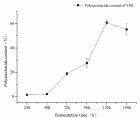
Figure 1
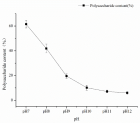
Figure 2
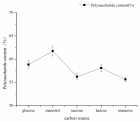
Figure 3

Figure 4
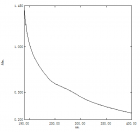
Figure 5
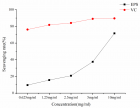
Figure 6
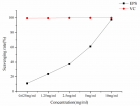
Figure 7
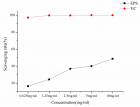
Figure 8
Similar Articles
-
Neutralizing scFv Antibodies against Infectious Bursal Disease Virus Isolated From a Nlpa-Based Bacterial Display LibraryTianhe Li*,Bing Zhou*,Tingqiao Yu,Ning Li,Xiaochen Guo,Tianyuan Zhang,Jingzhuang Zhao,Liming Xu,Siming Li,Lei Ma,Tingting Li,Liangjun Ding,Mingzhe Sun,Deshan Li,Jiechao Yin. Neutralizing scFv Antibodies against Infectious Bursal Disease Virus Isolated From a Nlpa-Based Bacterial Display Library. . 2017 doi: 10.29328/journal.aac.1001001; 1: 001-011
-
Photocatalytic Degradation of Microcystins-LR over Mesoporous graphitic Carbon Nitride (mpg-CN)Laiyan Wu*,Jirong Lan,Anping Yang,Yanxi Zhao,Songbo Wang,Junjiang Zhu*. Photocatalytic Degradation of Microcystins-LR over Mesoporous graphitic Carbon Nitride (mpg-CN). . 2017 doi: 10.29328/journal.aac.1001002; 1: 012-22
-
The impact of geographical origin on specific properties of pine honeyIoannis K Karabagias*,Christos Nikolaou,Ilias Gatzias. The impact of geographical origin on specific properties of pine honey. . 2017 doi: 10.29328/journal.aac.1001003; 1: 023-031
-
Convenient route synthesis of some new benzothiazole derivatives and their pharmacological screening as antimicrobial agentsAhmed A Fadda*,Nanees N Soliman,Ahmed Fekri. Convenient route synthesis of some new benzothiazole derivatives and their pharmacological screening as antimicrobial agents. . 2017 doi: 10.29328/journal.aac.1001004; 1: 032-046
-
How Bruguiera gymnorhizza seedlings respond to climate change induced salinity rise?Prosenjit Pramanick,Subrata Trivedi,Sufia Zaman,Abhijit Mitra*. How Bruguiera gymnorhizza seedlings respond to climate change induced salinity rise?. . 2017 doi: 10.29328/journal.aac.1001005; 1: 047-052
-
Synthesis of some new Schiff bases of Pharmaceutical InterestAjay Kumar,Shweta Verma,Arun K Mishra,Sushil Kumar*. Synthesis of some new Schiff bases of Pharmaceutical Interest. . 2017 doi: 10.29328/journal.aac.1001006; 1: 053-056
-
Retrosynthesis analysis; a way to design a retrosynthesis map for Pyridine and pyrimidine ringSamar S Fatahala*. Retrosynthesis analysis; a way to design a retrosynthesis map for Pyridine and pyrimidine ring. . 2017 doi: 10.29328/journal.aac.1001007; 1: 057-060
-
Combinatorial Therapeutic Approaches to DNA/RNA and Benzylpenicillin (Penicillin G), Fluoxetine Hydrochloride (Prozac and Sarafem), Propofol (Diprivan), Acetylsalicylic Acid (ASA) (Aspirin), Naproxen Sodium (Aleve and Naprosyn) and Dextromethamphetamine Nanocapsules with Surface Conjugated DNA/RNA to Targeted Nano Drugs for Enhanced Anti-Cancer Efficacy and Targeted Cancer Therapy Using Nano Drugs Delivery SystemsAlireza Heidari*,Christopher Brown. Combinatorial Therapeutic Approaches to DNA/RNA and Benzylpenicillin (Penicillin G), Fluoxetine Hydrochloride (Prozac and Sarafem), Propofol (Diprivan), Acetylsalicylic Acid (ASA) (Aspirin), Naproxen Sodium (Aleve and Naprosyn) and Dextromethamphetamine Nanocapsules with Surface Conjugated DNA/RNA to Targeted Nano Drugs for Enhanced Anti-Cancer Efficacy and Targeted Cancer Therapy Using Nano Drugs Delivery Systems. . 2017 doi: 10.29328/journal.aac.1001008; 1: 061-069
-
Impact of alloimmunization on transfusion-dependent patientsSurapon Tangvarasittichai*. Impact of alloimmunization on transfusion-dependent patients. . 2017 doi: 10.29328/journal.aac.1001009; 1: 070-082
-
The Role of Tau Protein in DiseasesBhaskar C Das*,Sribidya Pradhan,Devi Prasana Ojha,Arpita Das,Narayan S Hosmane,Sasmita Das. The Role of Tau Protein in Diseases. . 2018 doi: 10.29328/journal.aac.1001010; 2: 001-016
Recently Viewed
-
Maternal and perinatal outcomes of uterine rupture in Lubumbashi, Democratic Republic of CongoJacques Ngoy Kitenge,Olivier Mukuku*,Xavier K Kinenkinda,Prosper L Kakudji. Maternal and perinatal outcomes of uterine rupture in Lubumbashi, Democratic Republic of Congo. Clin J Obstet Gynecol. 2020: doi: 10.29328/journal.cjog.1001067; 3: 136-141
-
Do Fishes Hallucinate Human Folks?Dinesh R*,Sherry Abraham,Kathiresan K,Susitharan V,Jeyapavithran C,Paul Nathaniel T,Siva Ganesh P. Do Fishes Hallucinate Human Folks?. Arch Food Nutr Sci. 2017: doi: 10.29328/journal.afns.1001003; 1: 020-023
-
Assessment of Redox Patterns at the Transcriptional and Systemic Levels in Newly Diagnosed Acute LeukemiaAna Carolina Agüero Aguilera, María Eugenia Mónaco, Sandra Lazarte, Emilse Ledesma Achem, Natalia Sofía Álvarez Asensio, Magdalena María Terán, Blanca Alicia Issé, Marcela Medina, Cecilia Haro*. Assessment of Redox Patterns at the Transcriptional and Systemic Levels in Newly Diagnosed Acute Leukemia. J Hematol Clin Res. 2024: doi: 10.29328/journal.jhcr.1001029; 8: 017-023
-
Assessment of Indigenous Knowledge on Using of Traditional Medicinal Plants to Cure Human Diseases in South Omo Zone Baka Dawla Ari District, Kure and Bitsmal South EthiopiaGizaw Bejigo*. Assessment of Indigenous Knowledge on Using of Traditional Medicinal Plants to Cure Human Diseases in South Omo Zone Baka Dawla Ari District, Kure and Bitsmal South Ethiopia. J Plant Sci Phytopathol. 2024: doi: 10.29328/journal.jpsp.1001132; 8: 048-054
-
Nanoencapsulated Extracts from Leaves of Bauhinia forficata Link: In vitro Antioxidant, Toxicogenetic, and Hypoglycemic Activity Effects in Streptozotocin-induced Diabetic MiceBárbara Verônica Cardoso de Souza, Alessandra Braga Ribeiro*, Rita de Cássia Meneses Oliveira, Julianne Viana Freire Portela, Ana Amélia de Carvalho Melo Cavalcante, Esmeralda Maria Lustosa Barros, Luís Felipe Lima Matos, Tarsia Giabardo Alves, Maria. Nanoencapsulated Extracts from Leaves of Bauhinia forficata Link: In vitro Antioxidant, Toxicogenetic, and Hypoglycemic Activity Effects in Streptozotocin-induced Diabetic Mice. Arch Pharm Pharma Sci. 2024: doi: 10.29328/journal.apps.1001063; 8: 100-115
Most Viewed
-
Evaluation of Biostimulants Based on Recovered Protein Hydrolysates from Animal By-products as Plant Growth EnhancersH Pérez-Aguilar*, M Lacruz-Asaro, F Arán-Ais. Evaluation of Biostimulants Based on Recovered Protein Hydrolysates from Animal By-products as Plant Growth Enhancers. J Plant Sci Phytopathol. 2023 doi: 10.29328/journal.jpsp.1001104; 7: 042-047
-
Sinonasal Myxoma Extending into the Orbit in a 4-Year Old: A Case PresentationJulian A Purrinos*, Ramzi Younis. Sinonasal Myxoma Extending into the Orbit in a 4-Year Old: A Case Presentation. Arch Case Rep. 2024 doi: 10.29328/journal.acr.1001099; 8: 075-077
-
Feasibility study of magnetic sensing for detecting single-neuron action potentialsDenis Tonini,Kai Wu,Renata Saha,Jian-Ping Wang*. Feasibility study of magnetic sensing for detecting single-neuron action potentials. Ann Biomed Sci Eng. 2022 doi: 10.29328/journal.abse.1001018; 6: 019-029
-
Pediatric Dysgerminoma: Unveiling a Rare Ovarian TumorFaten Limaiem*, Khalil Saffar, Ahmed Halouani. Pediatric Dysgerminoma: Unveiling a Rare Ovarian Tumor. Arch Case Rep. 2024 doi: 10.29328/journal.acr.1001087; 8: 010-013
-
Physical activity can change the physiological and psychological circumstances during COVID-19 pandemic: A narrative reviewKhashayar Maroufi*. Physical activity can change the physiological and psychological circumstances during COVID-19 pandemic: A narrative review. J Sports Med Ther. 2021 doi: 10.29328/journal.jsmt.1001051; 6: 001-007

HSPI: We're glad you're here. Please click "create a new Query" if you are a new visitor to our website and need further information from us.
If you are already a member of our network and need to keep track of any developments regarding a question you have already submitted, click "take me to my Query."










